Best wide and ultra-wide for photojournalists (14- 28 mm): Sigma 20 mm F1.4 DG HSM A
Photojournalists have the pretty much the same requirements for wide and ultra-wide lenses as other photographers. High lens speed, size, weight and durability may all be on their check-list; however, they tend not to be so concerned with distortion as those who specialize in architecture, hence the rise in zooms that cover some bizarrely wide angles of view.
Still, due to considerations of size, weight, and not forgetting cost, focal lengths of around 14mm are the widest rectilinear models in this category. Like landscape photographers, photojournalists will use ultra-wides because of their apparent additional depth of field and effect of exaggerating the size of the subject (in the foreground) in relation to the background. The 35mm focal length usually falls into the wide category. But with its angle of view approaching that of the human eye, which is considered a “normal” lens by many photojournalists, we’ve excluded it from this section. Besides, as focal lengths approach 50-85mm, their optical quality is so high that it tends to skew the rankings.
The best performer in this category on the Canon EOS-1D X Mk II is the ultra-wide Sigma 20mm F1.4 DG HSM A. It is a big and heavy lens, but it has excellent sharpness and very low chromatic aberration given the high-speed maximum aperture. The Sigma 20mm also has low vignetting, excellent transmission at T1.6, and very good control of distortion for an ultra-wide. While it has some barrel distortion, it avoids the typical compound-type distortion that’s really only possible to remove with a lens profile in post-production.
In second place on Canon’s flagship is another Sigma Art series lens, the 24mm F1.4 DG HSM A. Although the Sigma lens is a great performer — particularly wide-open, where it has great center sharpness and low chromatic aberration, Canon’s highly-regarded L-series equivalent is also a very strong performer — in third place by the narrowest of margins. At around $1500, the Canon is decidedly more expensive than the Sigma ($850), but it has higher peak sharpness, lower distortion and slightly better illumination in the center, even though vignetting peaks at –3EV in the corners.
While all three models are designed for low-light work, and with photojournalists as the intended market, the Zeiss Distagon T*2,8/15 ZE would be our outside choice for an ultra-wide. Besides the sweeping 110-degree angle of view, this manual-focus lens has excellent control of distortion, superb control of chromatic aberration, and high peak sharpness. The slower f2.8 maximum aperture isn’t quite such a limitation with lenses this wide, and they’re far more forgiving of camera shake than longer focal lengths.
Best portrait lenses for photojournalists (35–135 mm): Sigma 50mm f/1.4 Art and Canon 35mm EF F1.4L II USM
Lenses between 35-85 mm in focal length are the best performers optically, at least when looking for the best balance in performance, so we’ve included the 35 and the 50mm in this category to prevent skewing our results. While the 85-135mm are often regarded as typical portrait lenses, the shorter 50mm and 35mm are often the focal lengths of choice for environmental portraits.
With the high-grade manual-focus Otus models from Zeiss featured in this category, it’s little surprise to see them occupy both first and second place for 55 and 85mm focal lengths. Zeiss even occupies third place (in fact, in first place for a 135mm focal length) with its Apo Sonnar T* 2/135 ZE model, an Otus in everything but name. With prices around $4,500 and $4000 respectively, it’s perhaps not surprising that the two Zeiss Otus models have the best balance of optical quality in their respective focal lengths.
All three Zeiss models achieve DxOMark lens scores exceeding 37 points on the EOS-1D X Mk II; however, AF models from Sigma and Canon in 85, 50 and 35mm focal lengths are not far behind with scores of 35 and 34, respectively.
As 35mm remains a popular choice, we’ve also chosen to look at the optical qualities of the best performer in that focal length, the new Canon 35mm EF F1.4L II USM.
Both Otus models offer similar peak sharpness levels equivalent to 19-Mpix of detail at around f/4, though optimum performance is achieved at f/5.6. The two models are also sharp right out to the corners at the initial aperture and share low levels of chromatic aberration, with the 85mm measuring a peak of just 3 microns; and both have excellent transmission, especially the 55mm at a remarkable T1.4. The Canon 35mm EF F1.4L II USM, on the other hand, has similar sharpness levels in the center wide-open, but it is weaker in the periphery until f/2.8, where it performs similarly. Like the two Zeiss models, it’s extremely well-corrected for lateral chromatic aberration, but it has more pronounced vignetting at the maximum aperture and continues to display a trace throughout the range.
As alternative choices to the manual focus-only Otus models, both the Sigma 85mm F1.4 (soon to be replaced by the recently announced Art model) and the Sigma 50mm F1.4 stand out for their combination of balanced optical performance and competitive pricing. They share similar peak sharpness levels, low fringing, distortion, and vignetting.
Best lenses for sports (150 mm and above): Canon EF 300 mm F2.8L IS II USM
Canon has a reputation for high-quality lenses, but it is perhaps their super-telephoto lens range that really stands out, and has done so for decades. All of the models have top-class AF and IS systems and are highly corrected, so they’re highly prized for sports (and wildlife — another target group of the EOS-1D X Mk II).
The flip side is that these lenses are big, heavy, and insanely pricey, and therefore a substantial investment for a photojournalist. While independents rarely cater to this market, Sigma offers a few models, including the new 500mm F4 DG OS HSM S, and they’re competitively priced. However, we’ve yet to test any on the Canon EOS-1D X Mk II.
With a DxOMark score 32 points, the highest-performing model on the EOS-1D X Mk II is the recently updated Canon EF 300 mm F2.8L IS II USM. At $6599, it’s not exactly cheap, but it’s still $4000 less than the EF 400mm F2.8L IS II USM in second place. Whereas the 300mm F2.8 was once considered the essential model for sports, the 400mm F2.8 — which is more versatile when paired with teleconverters (offering the equivalent of a 560mm F4 and 800mm F5.6) — has more or less taken its place. Of course, the EF 600 mm F4L IS II USM in fourth place (after the older, now discontinued EF 300mm F2.8L IS USM in third place) is another popular choice, as it is the longest in the range that can be paired with 1.4x and 2x Mark III teleconverters and still benefit from autofocus with both using all 61 AF points at an effective f/8 maximum aperture.
All three models share similar optical characteristics, with the 300mm having marginally-higher peak sharpness overall and being slightly sharper wide-open. However both the 400mm F2.8 and 600mm F4 models have excellent sharpness across the frame with minimal chromatic aberration, not to mention only mild vignetting, excellent transmission, and practically zero distortion. The outside choice, for those that can’t quite stretch to the the 600mm’s $12,000 asking price, is the smaller and lighter EF 500mm F4 IS II USM. Not only does it have similar high-grade performance, it is smaller and lighter than the 600mm, around 20% cheaper, and the camera’s AF is compatible at an effective f/8 maximum with both teleconverters.


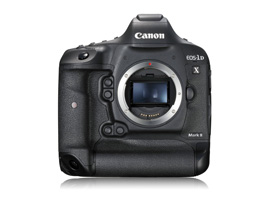
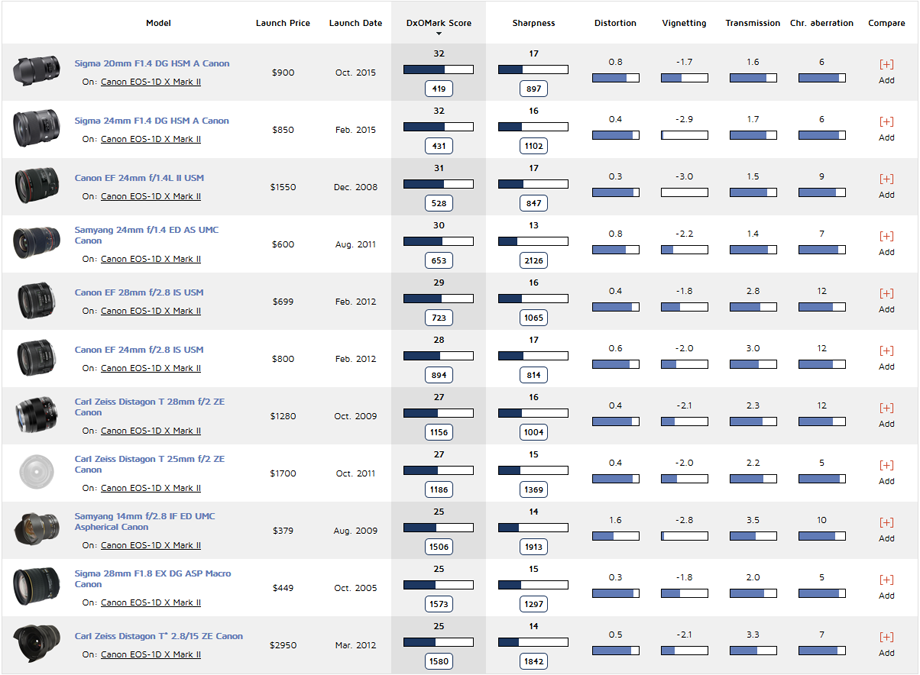
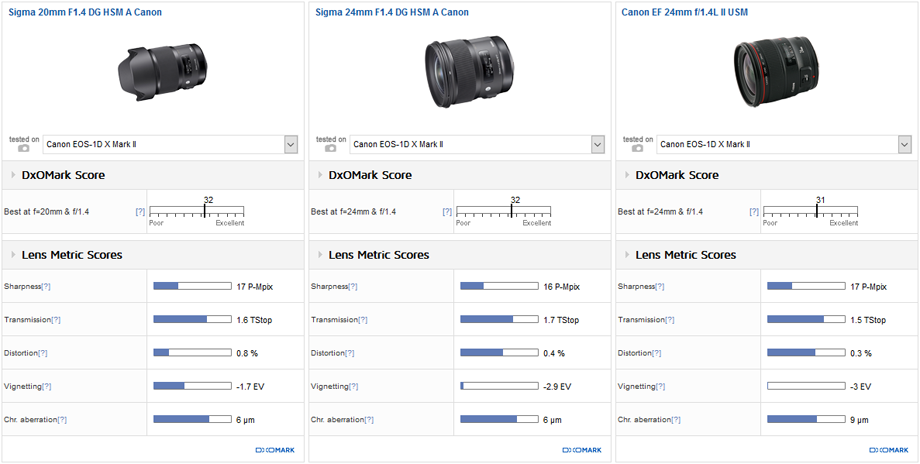
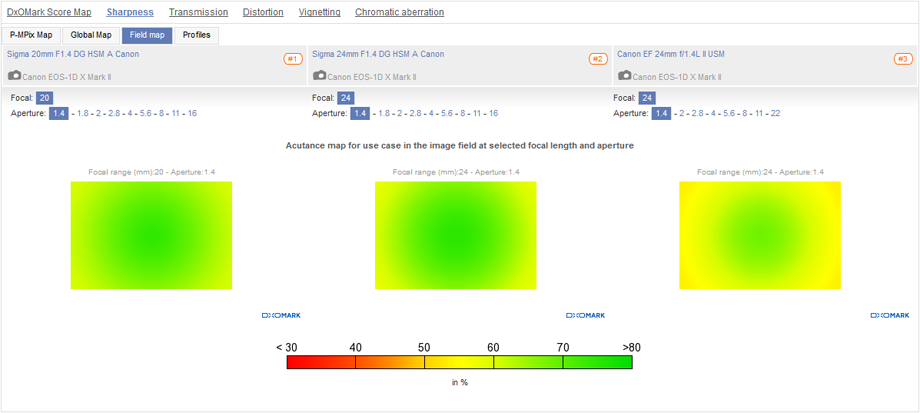
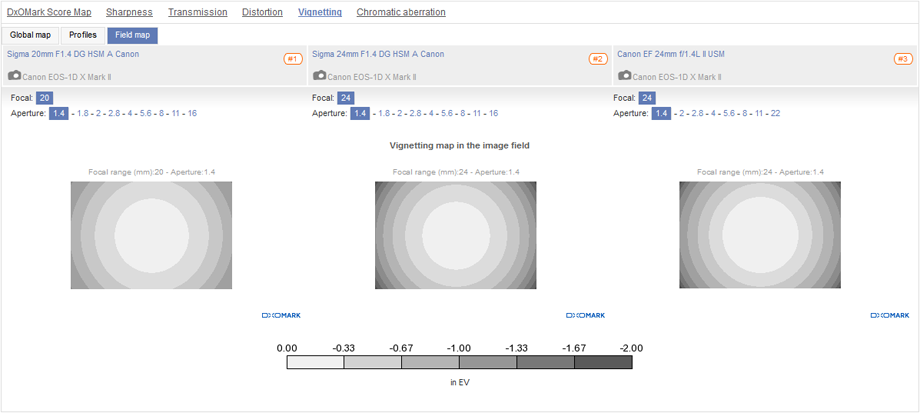
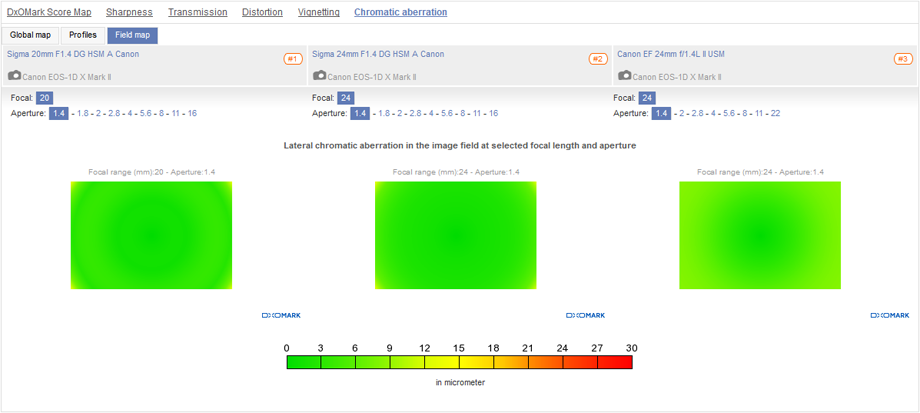
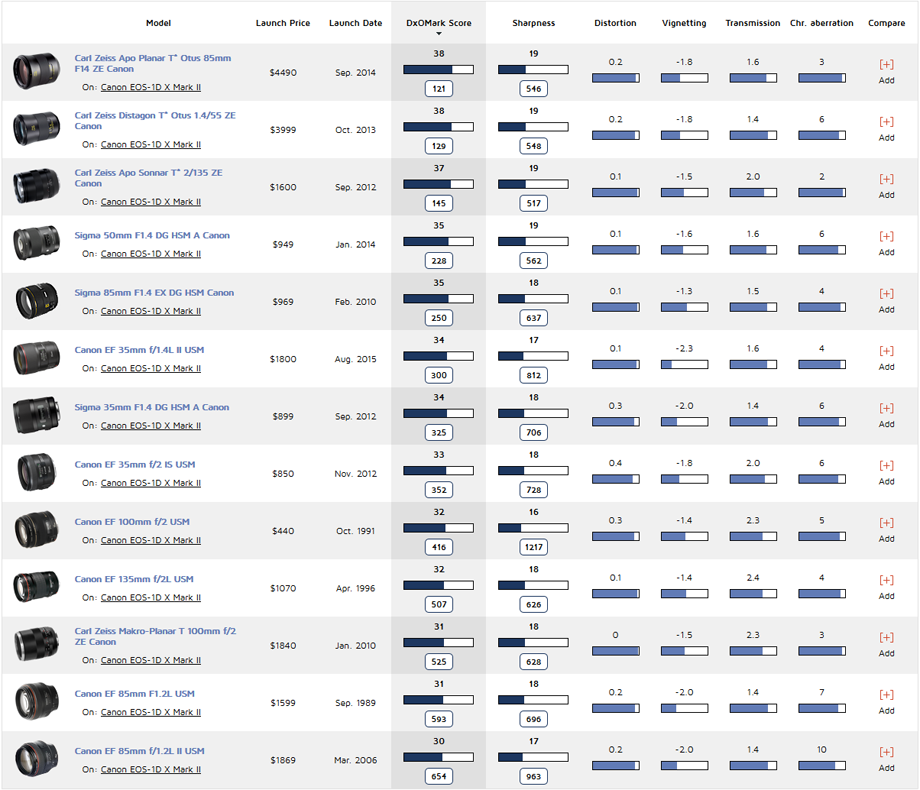
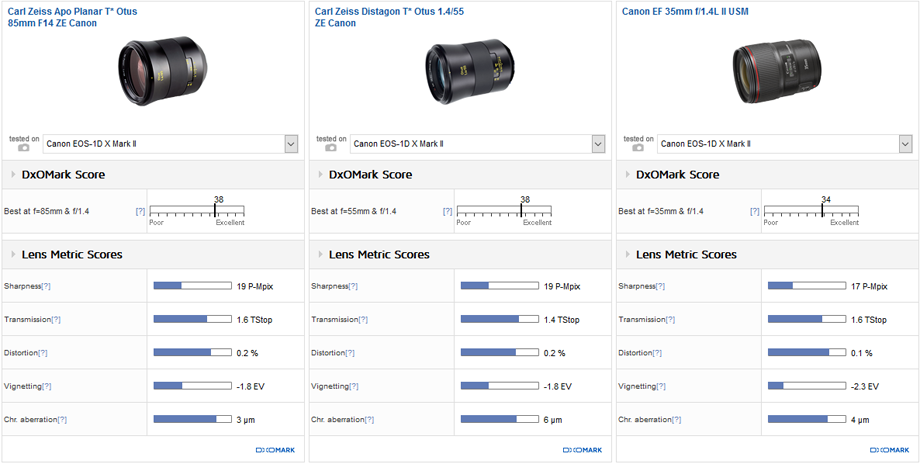
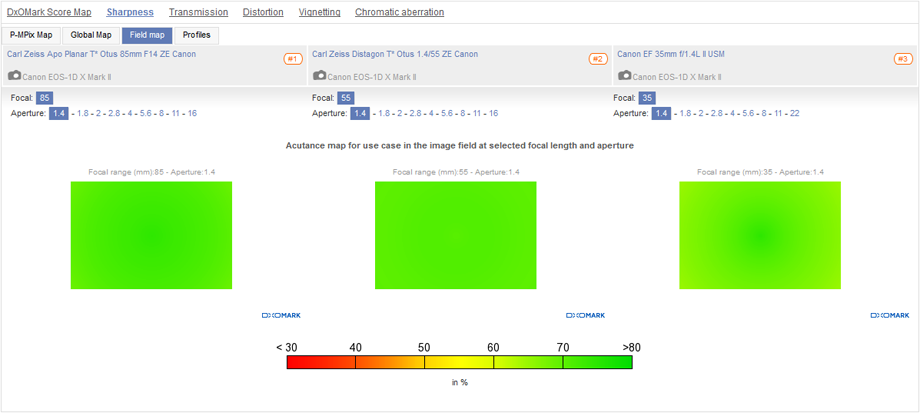
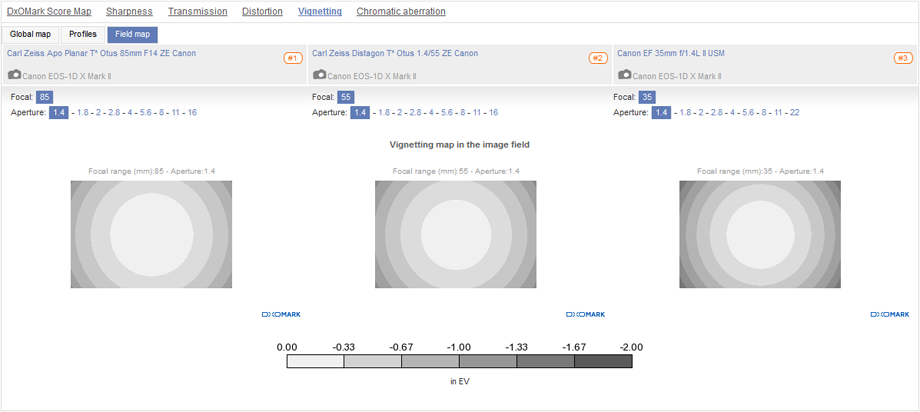
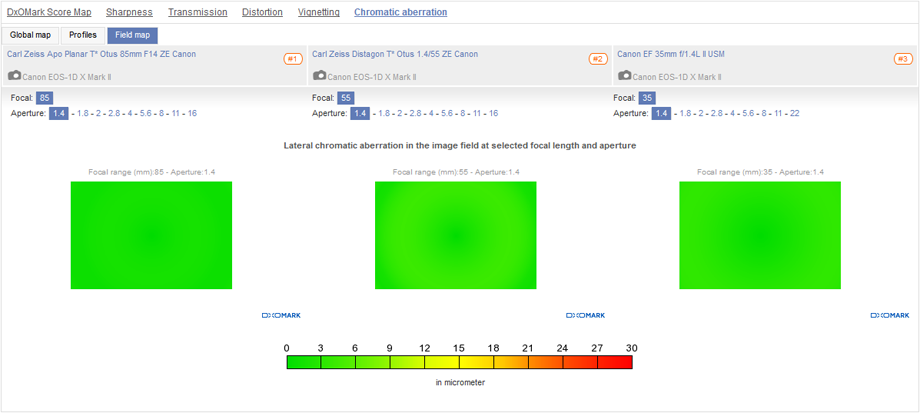
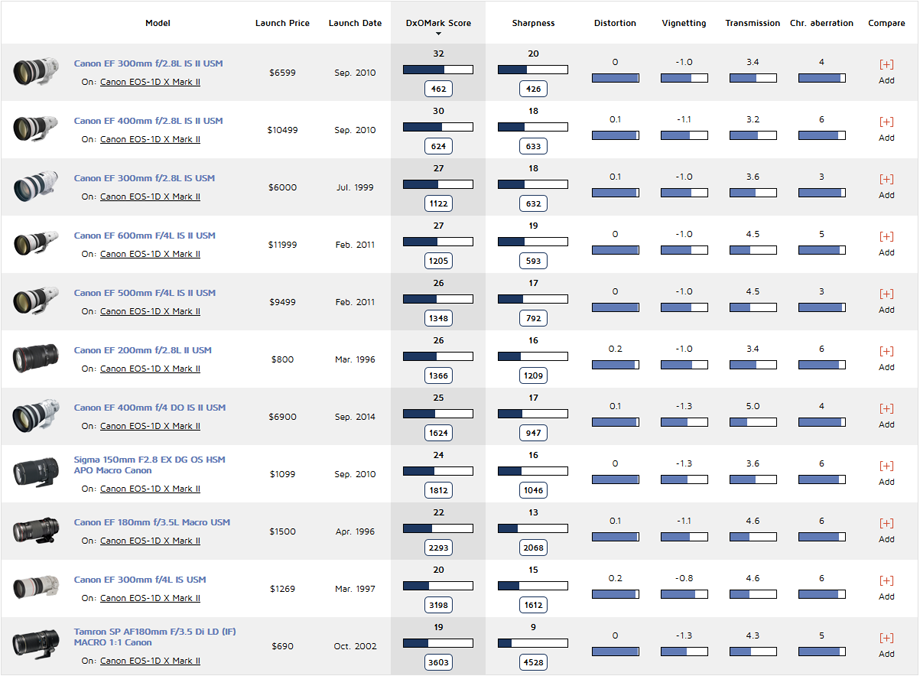
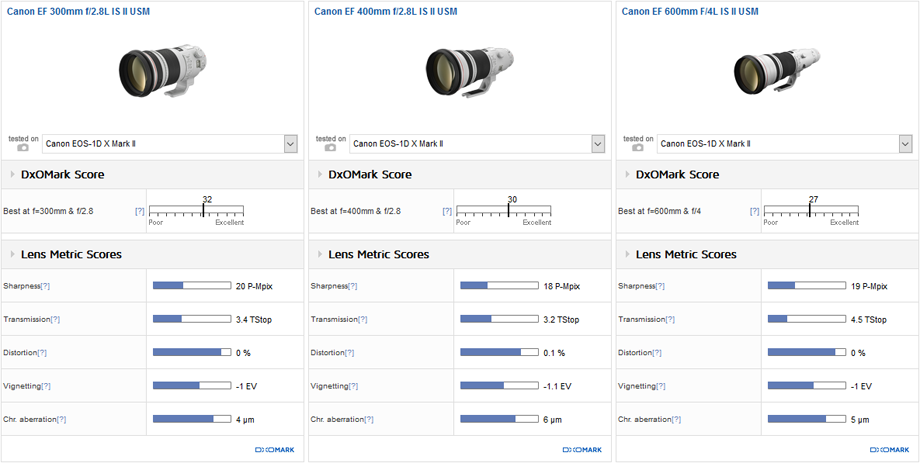
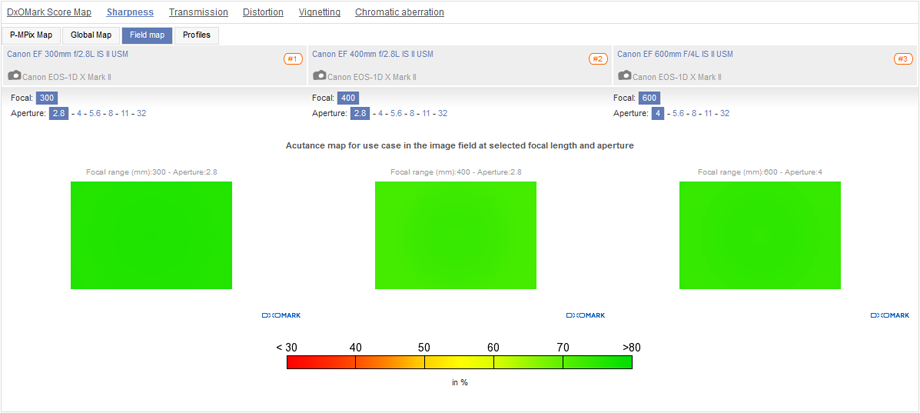
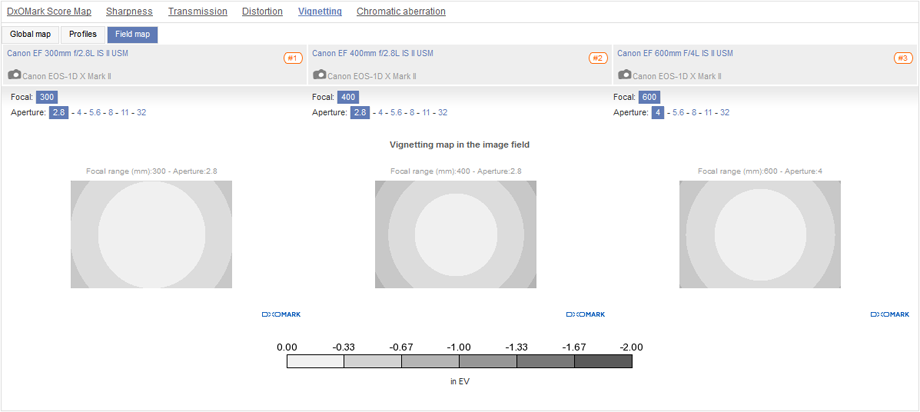
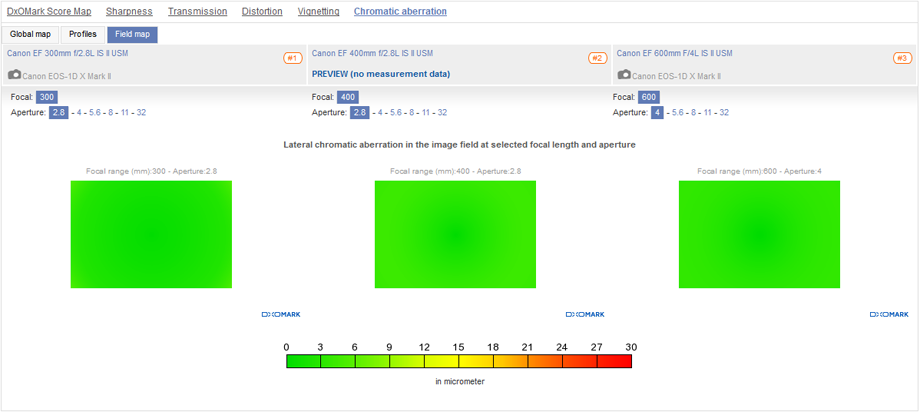
DXOMARK encourages its readers to share comments on the articles. To read or post comments, Disqus cookies are required. Change your Cookies Preferences and read more about our Comment Policy.